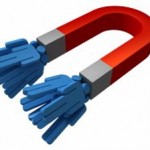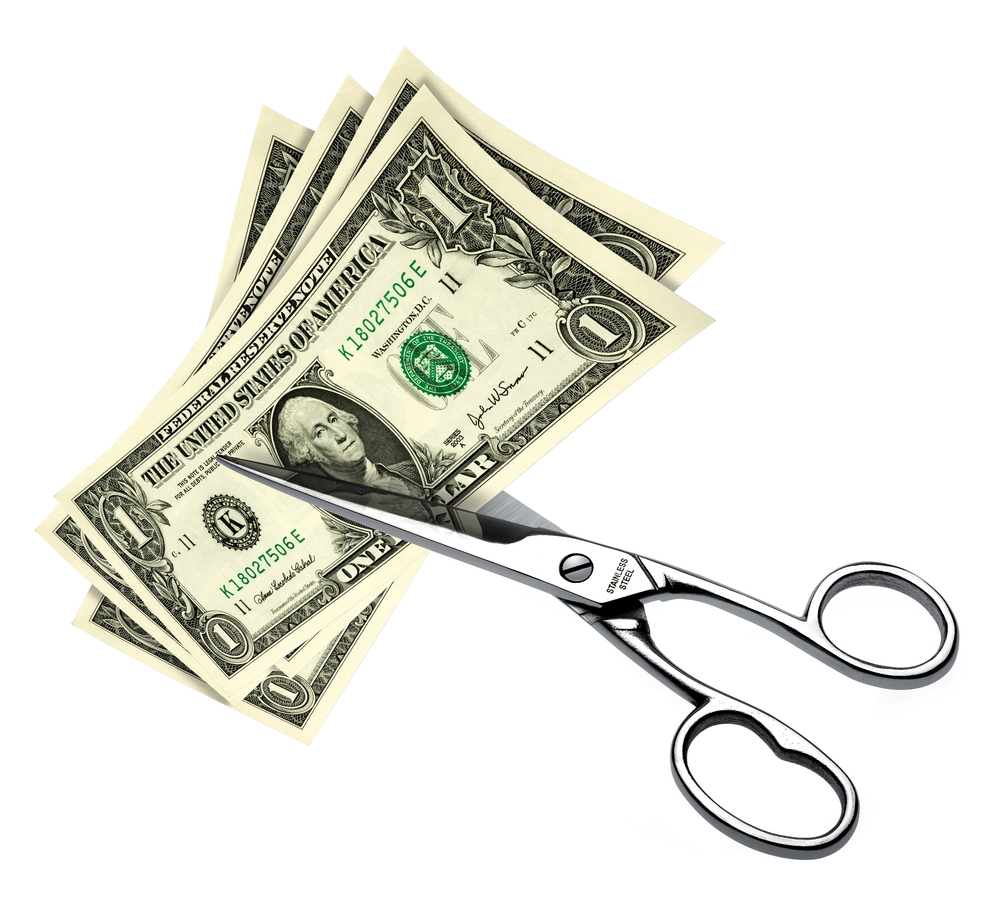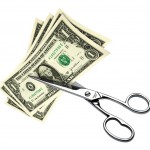03 Sep 2015
Is Alcohol Bad for Business?
 Imagine yourself at a business networking event or at a dinner with a prospective boss or client. The waiter offers you a tantalizing assortment of drinks but instead of sparkling water or soft drink, you select a glass of red wine.
Imagine yourself at a business networking event or at a dinner with a prospective boss or client. The waiter offers you a tantalizing assortment of drinks but instead of sparkling water or soft drink, you select a glass of red wine.
In your mind, it seems innocent enough and you presume that holding that glass of wine will make you appear more intelligent, successful, interesting or debonair to your potential boss or customer, right?
Unfortunately, you’re only 2 minutes into the night, and you may have already made your first rookie mistake – which could cost you your chance of landing your dream job, picking up a great new client or doing business with someone in the room.
So what went wrong?
We see images of alcohol being consumed in a business context all the time – sexy, successful men like Don Draper and Jordan Belfort, living the high life and partaking in alcohol to spark creativity, boost confidence, bond with colleagues or build rapport with clients.The association with fun, virility, worldliness and success has been deeply ingrained in our culture through print media, TV and Hollywood film.
Unfortunately, the association of alcohol with drunkenness (or at least impairment) is even more deeply embedded in the subconscious of your mind.In fact, even if you just see someone holding a glass of wine at a business networking event or on a social media site, it will likely reduce your assessment of their intelligence. Research proves that even a stone-cold sober person holding a glass of wine suffers an apparent 10-20 point IQ drop, not in real terms, but in the eyes of the observer.
Why Do We Unconsciously Judge People Who Consume Alcohol?
The “imbibing idiot bias” is documented in a 2012 study by Scott Rick (University of Michigan) and Maurice Schweitzer (Wharton – The University of Pennsylvania). Their work demonstrates, among other things, that subjects viewed holding a glass of wine at a business networking event were judged to be less intelligent and less appropriate for hiring. Conversely, participants who were pictured with a soft drink were viewed as more intelligent and more hireable.
These conclusions were further explored in a March 2013 Australian survey of 100 business owners who attended an after-business networking event. 71% reported having at least one alcoholic beverage, while 36% reported having at least two. Not surprisingly, the 36 respondents reported the least number of business cards exchanged and qualified leads gained. The 29% who did not consume an alcoholic beverage exchanged twice as many business cards and gained 41% more leads.
The “imbibing idiot bias” is an example of a phenomenon called “the priming effect.” Priming occurs whenever decisions and actions are predisposed, hastened or influenced in a particular direction by the context, visuals, emotions, or symbols presented.
Why is Priming So Damn Effective?
Priming works to influence and persuade because most of the drivers behind the choices and decisions you make every day happen primarily below the level of thought and consciousness. This means that all of us – executives, job candidates and business owners – are strongly influenced by intangible factors that largely go undetected by the rational parts of our minds.
Evidence of the priming effect is all around us – at work, at home and in the media.
It is the reason why presidents pose for photos while sitting behind a large wooden desk, surrounded by a flag, a photo of their family, and bookshelves full of leather bound books. Without saying a word, the context has already predisposed or influenced your opinion of their values, work ethic, and intelligence. And it also explains why voters tend to cast more politically conservative ballots if asked to attend polls in or near a church location, as opposed to those who vote near government or secular buildings.
Despite what you might think, alcohol and business don’t mix!We are conditioned to associate alcohol with cognitive impairment, and even when no such impairment is present, the association still sticks and we will automatically judge the person partaking as less intelligent and less suitable for doing business with.
In challenging economic times, where perception and first impressions can make the difference between thriving and barely surviving, it makes good sense to avoid alcoholic beverages when you are networking, interviewing, selling or posting in social media environments. In light of many people’s liberal views toward what they say/post online (all of which are very easy to access by an employer, recruiter, customer or supplier), this research could help you make the best impression possible in business.
Understanding how strongly the human brain is influenced and primed by subtle cues (such as a glass of wine or beer) can prevent you (or one of your team members) from unwittingly committing an act of reputation suicide at a business networking event.
Does The Imbibing Idiot Bias Also Apply To Social Drinks With Colleagues?
In sharp contrast to this, however, there have been several recent studies (*see research excerpt below) that seem to indicate moderate alcohol consumption may increase social bonding between team members and stimulate longer conversations.While alcohol and business networking, prospecting and interviewing don’t mix, there is some evidence that in the confined setting of drinks among existing team members in an after work social context, moderate consumption allows for increased social bonding, engaging conversation, camaraderie and positive displays of emotions.
There are also specific industries and certain cultures where alcohol consumption is more acceptable and in some instances encouraged. In fact many executives who specialize in doing business in Asia will insist imbibing is a must if you want to build relationships and do business in Asian countries.
Summary – Do Alcohol and Business Mix?
Under limited circumstances (i.e. team bonding, certain industries, specific cultures), alcohol and business may in fact mix.However, for those of you who are looking for jobs, clients, joint venture partners, suppliers etc,. it may still be very prudent to err on the side of caution and not indulge in front of someone that you are trying to make a good impression with. While a glass of wine or beer might taste refreshing for a moment, it may to curb your ability to attract leads, clients, positions, investors or partners. It should be noted that most of the research on this topic to date appears to be localized – it would be valuable to see more studies done in other countries and cultures where different associations may have been built up over time. These cultural nuances would of course impact the judgments that business people (in those industries or countries) would make when alcohol is served and it would be exciting to see if these initial studies have global applicability or not.
[*A team at the University of Pittsburgh recently conducted a study with 720 participants divided into small groups. Each participant received three drinks (either alcoholic, non-alcoholic or a placebo) over a 36-minute period. The subjects were videotaped by a hidden camera as they consumed their beverages and conversed. Then, experts in facial expressions and speech patterns evaluated their interactions with each other and found that moderate amounts of alcohol:
• Increased the frequency of “true smiles” and reciprocity of smiling;
• Increased social bonding;
• Kept all parties engaged in the discussion longer; and
• Enhanced positive emotions while decreasing negative emotions.]
**This blog is an excerpt taken from a series of posts and press releases on this subject by Rhondalynn Korolak. She is the best-selling author of 3 books, the most recent of which – Sales Seduction – is in the Top 20 Sales and Marketing Books on Amazon.com,
 If there’s one difficult experience that every sales or marketing professional has been through at least once, it’s that sinking sensation that comes when a campaign you really poured your heart and soul into just doesn’t hit the mark, for reasons you don’t completely understand. Naturally, you wonder if it was something obvious that you missed – like a spelling error or a grammatical snafu? Maybe you didn’t include enough information? Or your call to action just wasn’t compelling enough?
If there’s one difficult experience that every sales or marketing professional has been through at least once, it’s that sinking sensation that comes when a campaign you really poured your heart and soul into just doesn’t hit the mark, for reasons you don’t completely understand. Naturally, you wonder if it was something obvious that you missed – like a spelling error or a grammatical snafu? Maybe you didn’t include enough information? Or your call to action just wasn’t compelling enough?
Read More
John Wannamaker may not be a household name but he opened the first department store in Philadelphia in the late 1800’s and is believed to be the inventor of the price tag and the seasonal sale. He was the first retailer to place a half-page newspaper ad, and also the first full-page ad five years later. He is widely considered to be one of the fore-fathers of advertising and credited with the famous phrase: “Half the money I spend on advertising is wasted; the trouble is, I don’t know which half.”
His words survive as one of the most frequently quoted clichés in marketing and advertising, even after radio, TV and now the internet, have replaced the dominance of print advertising.
Why with all we’ve accomplished in the last one hundred and twenty years, is this quote still relevant and significant to you (and to all marketers) today?
In fact how do you know you’re not throwing away 2/3 of your advertising budget? Or perhaps even as much as 3/4?
How can you be sure that your next campaign, sitting on your desk waiting for your approval, won’t be an abysmal failure – sucking your bank account dry and producing no measurable influx of qualified leads and sales?
Do you know with certainty which half of your advertising budget is wasted? Want if you needed to find out?
Right now, your audience is getting harder to reach in all the traditional media channels, and the rules of marketing have changed. Print newspaper readership, radio listeners and even TV viewers are down. Consumers have adapted to new technologies – the internet, iTunes, podcasts, downloads – and can now comfortably avoid unwanted advertising in many of these old channels.
Many of the old ways are being replaced by new ones. The internet, content marketing, video and social media have emerged as the new, dominant players. To succeed in this new realm of advertising, requires a shift in both mindset and strategy.
You used to be able to get away with talking at your prospects (or having one-way conversations), now you must respond to their comments (positive and negative) in real time.
Where five years ago you could simply focus on spending less to find more local prospects, now you must excel at “being found” in a sea of global competitors.
Thankfully, these new mediums bring with them two significant benefits – targeting and measurability. Finally, improving your odds of determining which half of your advertising budget is wasted, is not only possible, but refreshingly do-able. You simply have to know which tips and tools to use to maximize your return on investment (ROI).
Here are five practical tips for developing an effective measurement strategy for your online and offline marketing communications – (and for determining which half of your advertising budget is wasted):
1) Monitor all incoming leads
Where possible, place a unique phone number (or email address) in different media placements to gauge which ad creative, copy, design elements or physical placement garners the most qualified traffic and sales. Each unique number or email address can easily be re-routed to your primary incoming line or email, so you can streamline the process of receiving and replying to these valuable enquiries. To minimize confusion with your target audience, try to refrain from using too many different numbers at once.
For some brands, that are highly identifiable and use a memorable phone number, tracking may not be viable. As an alternative, try recording the inbound calls and use the insights to train your sales team. While it may cost more, the recorded conversations will provide significant insight into the interest level, FAQ’s, objections and pain/issues of your prospects.
2) Use Split Testing
When you see a banner, video, text or display ad online, it has been sent to your computer or mobile device from an ad server. In most cases, what this means is that the advertiser will have been given the opportunity to split test their ads – to change their online creative in real time to monitor impressions, clicks, engagement and conversions. Essentially some of the audience will see one version of the ad, while others may see different versions.
But split testing doesn’t just apply to online ads and websites. In fact it can be used effectively with any online or offline marketing piece to test different creative, copy, or calls to action. It allows your audience to tell you in tangible terms which messages they prefer and are inclined to respond to favourably.
3) Set Up Specific Landing Pages
Most small business owners will make the mistake of wasting a lot of money on ads to send traffic direct to their homepage. More often than not, 90% of this traffic will bounce off your website within seconds because the content they are interested in is either not featured prominently on the homepage or is just too hard to find. In order to maximize the engagement of your traffic and your ROI, you need to ensure that you are taking your leads to pages where the specific content and offer you are advertising is the ONLY information presented.
The easiest way to do this is to set up landing (or private) pages on your site with unique URLs for each offer. The landing page will give each user a more customized experience and it will allow you to set the stage for an inquiry, call to action or sale.
These landing pages are also extremely effective for allowing you to track and measure ROI from both online and offline ads – when a prospect converts, you can directly attribute that conversion to a specific marketing piece because the landing page URL is unique for each one. Where possible, remember to use a user-friendly URL (one that is short, relevant and easy to remember) to drive traffic from offline media – it will boost retention, recall and action by up to ten times.
4) Google Analytics
Google Analytics is an invaluable tool that can help you measure what is working and what isn’t on your website. However, just like the human brain, most site owners haven’t fully tapped into the full potential and power of it. In addition to telling you where your traffic is coming from and which search terms or links were used to find you, Google Analytics also measures where users click most on a given page, how long they spent on your site and where they go when they navigate away from your page. Google analytics can provide you with enough data to isolate and eliminate marketing that’s not generating profitable growth.
Research indicates that the average conversion rate for a website is between 2.2 – 4%. What this means is that 96-97.8% of the visitors that came to your site today, left without taking any action. They key to minimizing the leakage and maximizing the percentage that remember your message and take action lies in analysing the data that Google can provide on your website traffic and trends. It doesn’t make sense to spend more money on marketing if a large percentage of your audience is choosing not to take action.
5) Stop Chasing Clicks and Eyeballs
A click (or eyeball viewing your offline ad) means nothing to your business. It earns no revenue and creates no brand equity. Your advertising has to have a tangible end goal – and it shouldn’t be to reach the most eyeballs or generate lots of clicks. To have a successful business, you need people to discover how you can cure their pain, seek more information, join your list, or purchase your product/service. Success lies not in how many people know what you do but rather in how many you are able to connect with and inspire to say “yes” to your product/service.
 Today I want to share with you 2 things that you should never do/include in your sales or marketing message, if you want to get more customers to your business.
Today I want to share with you 2 things that you should never do/include in your sales or marketing message, if you want to get more customers to your business.
To prove my point, I’m going to share with you two examples of what NOT to do.
I saw a billboard recently on a major freeway. It read “Texting While Driving KILLS”. Then down below in fine print were the words “For more driving tips, text ‘SAFETY’ to 79191.” Now I’m sure you are probably laughing or at least smiling right now because this is an obvious case of sending a mixed message. And you’re right, I’m sure it is very clear to you why this message is ineffective. But the sad part is – this type of miscommunication or presentation of conflicting ideas is seeping in and polluting your sales and marketing materials every day. To get more customers to your business, you have to stop making this costly mistake.
Take for example your website, your eNewsletter or your brochure/catalog. What exactly are you asking your prospect or customer to do? Did you make the mistake of trying to cram 3 or 4 competing requests onto one page? Did you ask them to buy your product, join your database, visit your blog and watch your latest video? Chances are, you got really excited about what you do and you wanted to share everything you could on just that one tiny page. And I can understand why you got excited but you confused your audience and most of them walked away because what you wanted them to do wasn’t clear.
Now what you did may not have been as blatant as “For more driving tips, text ‘SAFETY’ to 79191.” However, the end result was the same.
If you want to get more customers and prospects to your business, you need to focus on communicating one clear message. If your message is clear and there is only one action that they could take, you will find that the number of people who step forward and take that desired action will go up dramatically.
Now that brings me to my second point.
The second mistake I don’t want you make is to use words or sentences that are confusing. Take for example this sign I saw outside a motel – “Free Wifi Starting at $59.99”. I think the motel owner who put up this sign was either in a rush or ran out of space because he forgot a few important words. What he probably meant to say was “Free Wifi. Rooms starting from $59.99”. He only forgot two small words but those simple words made the difference between a message that was clear and one that made absolutely no sense at all.
Now you may not be offering free wifi but I bet you may have used or at least seen terms like “scalable architecture”, “a customer-centric model”, “ holistic approach” or “results-based focus”. These words mean nothing to the reptilian brain (the part of your customer’s brain that decides and takes action). That part of the brain is 45million years old and it struggles to process and understand complex words, numbers, unfamiliar symbols and graphs that contain too much information. If you want to speed up the decoding process and make it easier to get more customers to your business, you need to make your message simple. Choose words that are clear and easy to understand. Complete your thoughts and sentences – don’t make it difficult and give your customer the excuse – “I need to think about it”. If your customer has too think too hard to decode your message, he simply won’t make a decision
Now I want you to be honest with yourself – is there a chance you might be sending mixed messages to your potential customers? Are your sales/marketing messages clear and succinct? If not, now is the best time to go back and re-write your materials. If you want to get more customers to your business, you need to simplify what you are asking them to do and use language that is easy to interpret.
 I’ve got a major challenge for you…
I’ve got a major challenge for you…
I want you to assess what you are currently spending on marketing – brochures, website, pay per click campaigns, PR, newspaper, direct mail, social media etc. – and I want you to slash the total budget by 20%.
No matter what you are selling and where you are selling it, I guarantee that you won’t miss the 20% you just saved and put back in your bank account. And there is a very good reason for that…
98% of the people who see your message either don’t remember it or are not compelled to take action. You are spending thousands of dollars each year on sales and marketing campaigns and the vast majority of the people who see your message don’t really “get” your message – so they can’t possibly recall it or buy from you.
So with the money you just saved, I’m going to show you how to increase your sales. To do that, I want you to take a few minutes right now to re-engineer your message from the ground up and give yourself a better chance of achieving cut through, retention and action with your ideal target audience. Thankfully, it won’t cost you much to take the time right now to create a message that increases your sales (by helping more of your prospects to say “yes”). And if more of your qualified leads say “yes”, the money you do have left to spend in your sales and marketing budget is going to produce a much better return.
To prove my point, I’d like to make you an interesting offer…
What if I were to give you either $50 cash right now or a piece of paper where I will write the net present value of a five year annuity on $10 at a compound annual interest rate of 10%, adjusted for CPI?
Which of these offers sounds more appealing and valuable to you? Which would you rather take right now? Or said another way, which of these can you take now, put in your wallet or spend it at the shopping centre?
Unless you are one of those very rare individuals who can calculate in your head the value of my second offer, I’m willing to bet you’d rather just take the $50. And that makes a whole lot of sense, because everyone knows what $50 is worth. There’s nothing confusing about it, is there?
The part of your brain that makes decisions is not interested in working hard to figure out what my message means and what it’s worth. That part of your brain is looking for something that is tangible and relevant.
And if you’re unsure about whether a message is tangible or not – ask yourself this simple question “would a 6 year old understand it?”
Think about it – if I offer you a $50 note, an orange or a book, you don’t have to think very hard to decipher the value or usefulness of what I am offering you, do you? All of these items are equally easy to understand. As soon as you see them, you know what they are and you know exactly what you can do with them, don’t you? $50 will buy you enough food to cook a meal, the orange is good for you and a book is something that you can read. There are no directions or heavy thinking required to make sense of what I am offering you. Your new brain doesn’t have to do any thinking (and wasting time) to get my message.
So what does this mean for you, your message and your customers?
If you are making it hard for your prospects and customers to understand what you do and whether they are getting a good deal, you need to spend some time right now making your offer more tangible. Ask yourself “does my message include a bunch of big words, fluff and jargon?” Could it be boiled down to something simple that even a 6 year old could understand? What do you need to do today to re-work and re-communicate it more clearly so that your prospects will be able to say “yes”? Can you simplify the words that you use or introduce photos or props to get your message across more quickly and clearly?
Producing a simple, succinct message is a lot harder than being lazy and throwing together an ad full of useless, complicated jargon and information. A good rule of thumb here is to remember that you should work harder to craft and simplify your message than your prospect has to in order to decipher it. Someone has to do the hard work – either you can do it before you put it out there or your audience will be forced to do it which means they may get stuck thinking about it instead of deciding.
Now if you are serious about saving money and you would like to increase your sales, you won’t spend another collar until you review your materials and do whatever it takes to make your message more tangible. You don’t have to spend more money to chase leads and increase your sales. What you really need to do is take the complication and confusion out of your message so that more of your prospects can say “yes” now.














